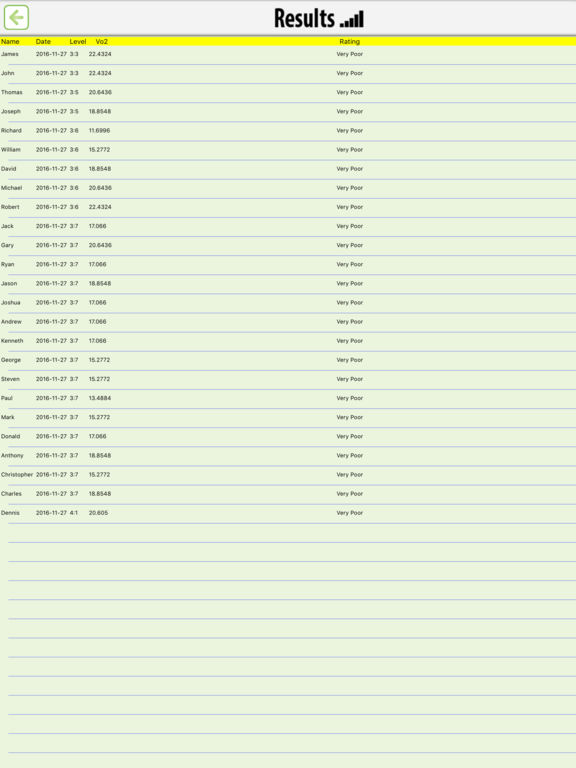

Journal of Applied Physiology, Vol 49, p1-5. Shuttle run test to predict VO 2max', European and Lambert, J., 1982, 'A maximal multistage 20m There have also been modifications of the beep test, such as changing the distance run or the mode of movement (swimming, wheelchair) to make the test more specific to particular populations. As this only affected the speeds of the early stages, and that starting speeds are quite slow, there is effectively no difference in results between these protocols. For some reason, many of the subsequent versions which were made started at 8.0 km/hr, jumped up to 9.0 km/hr then 0.5 km/hr for each stage thereafter (this is the version we use on this site - see data table). The protocol presented in the original study by Léger and Lambert (1982) starts at a speed of 8.5 km/hr and increases by 0.5 km/hr for each one minute stage. These differences are relatively minor may only have a small effect on the expected results.

You jog over to one side, and a beep ensues a few seconds later, propelling students to the other side. Popping in the audio CD, a woman with an inhumanly cheerful tone instructs you to start running. The gym teacher yells at everyone to line up at one end of the gym.

Depending on the source of the test, the test timings may vary a little or the number of shuttles may be different. The most infamous of the gym class exercise triad (remember the Mile Run and Suicides). There are several common variations of the beep fitness test that you should know about. The beep test used today is essentially the same as the 20m test that was first introduced in 1982 (Léger & Lambert, 1982) (see history of the beep test).


 0 kommentar(er)
0 kommentar(er)
